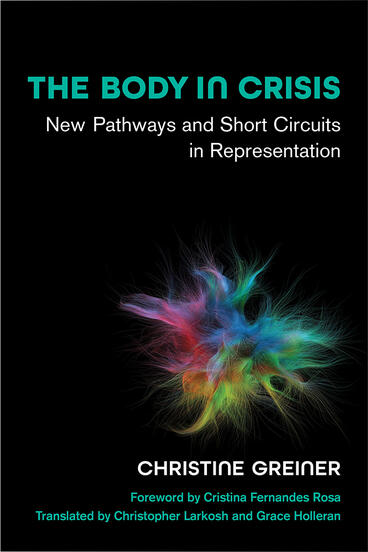The Body in Crisis
New Pathways and Short Circuits in Representation
Foreword by Cristina Fernandes Rosa, Translated by Christopher Larkosh and Grace Holleran
A major theoretical work by Brazilian dance scholar Christine Greiner explores the political relevance of bodily arts in the age of neoliberal globalization
Description
The Body in Crisis introduces the English-speaking world to the work of leading Latin American dance scholar and philosopher of the body, Christine Greiner. The book offers an innovative set of tools with which to examine the role of moving bodies and bodily actions in relation to worldwide concerns, including identity politics, alterity, migration, and belonging. The book places the concept of bodymedium in dialogue with the work of Giorgio Agamben to investigate notions of alterity, and shows how an understanding of the body-environment continuum can shed light on things left unnamed and at the margins. Greiner’s analyses draw from a broad range of theory concerned with the epistemology of the body, including cognitive science, political philosophy, evolutionary biology, and performance studies to illuminate radical experiences that question the limits of the body. Her analysis of the role that bodies play in negotiations of power relations offers an original and unprecedented contribution to the field of dance studies and expands its scope to recognize theoretical models of inquiry developed in the Global South.
Christine Greiner’s research has explored movement practices and body-centered performances from Brazil and Japan, and more recently, the political dimensions of communication and bodily arts. A Professor at the Pontifica Universidade Católica of São Paulo (PUC-SP), she is author of five previous books and numerous articles.
Cristina Fernandes Rosa is Senior Lecturer in Dance at the University of Roehampton, London.
The late Christopher Larkosh was Associate Professor of Portuguese at the University of Massachusetts Dartmouth.
Grace Holleran is a doctoral student in in Luso-Afro-Brazilian Studies and Theory at the University of Massachusetts Dartmouth.
Reviews
“Compact with references to authors from Agamben to Prigogine, from Bataille to Viveiros de Castro; from Susan Sontag to Francisco Varela, this translation comes at a particularly pressing time, when social, political, and aesthetic forces combine to relaunch the question: what can a body do . . . The book will make an immense contribution to dance studies and to performance studies, and, given the current boom of interest in dance and choreography, to the visual arts, philosophy of art, museum studies, curatorial studies, and related fields.”
—André Lepecki, New York University
“Compact with references to authors from Agamben to Prigogine, from Bataille to Viveiros de Castro; from Susan Sontag to Francisco Varela, this translation comes at a particularly pressing time, when social, political, and aesthetic forces combine to relaunch the question: what can a body do . . . The book will make an immense contribution to dance studies and to performance studies, and, given the current boom of interest in dance and choreography, to the visual arts, philosophy of art, museum studies, curatorial studies, and related fields.”
- André Lepecki
—André Lepecki, New York University

